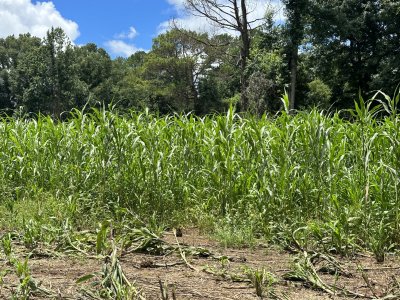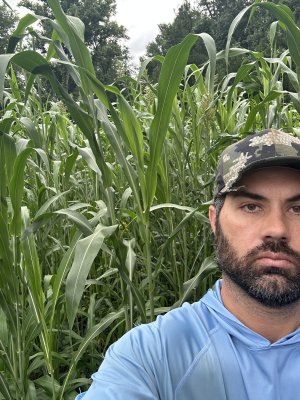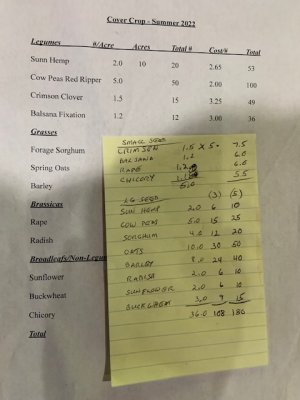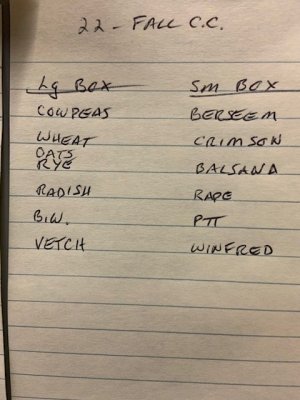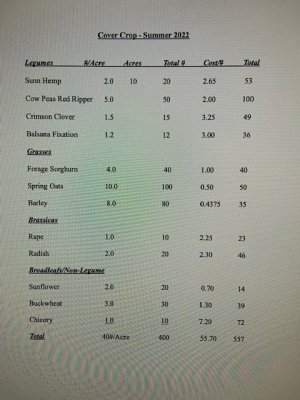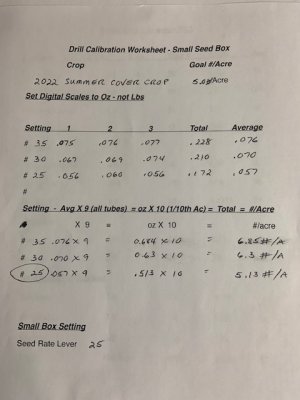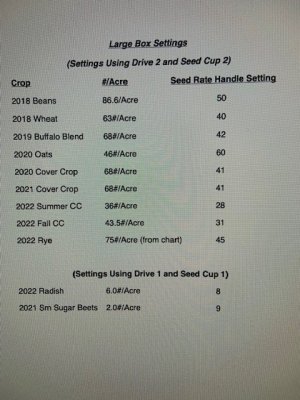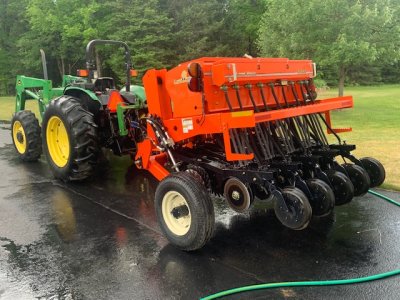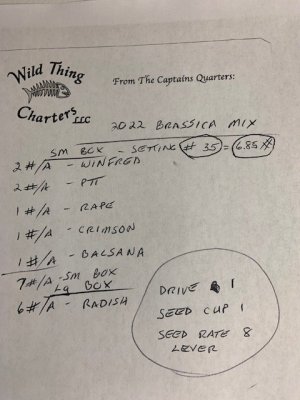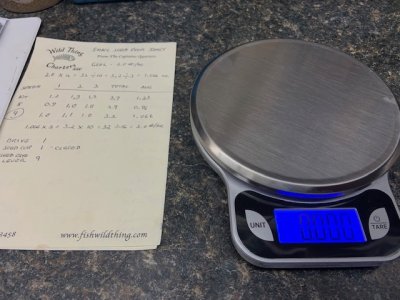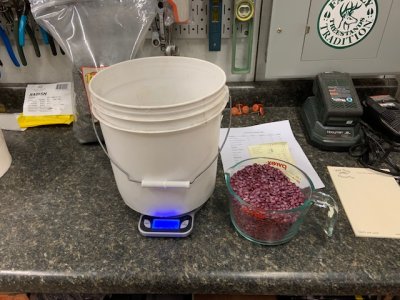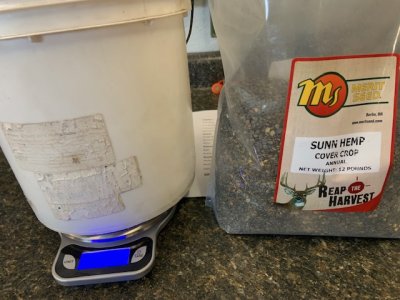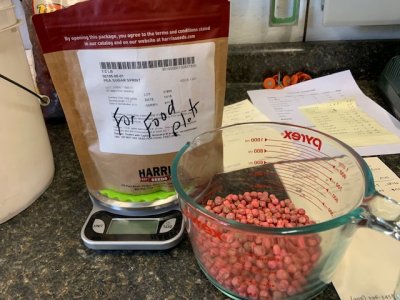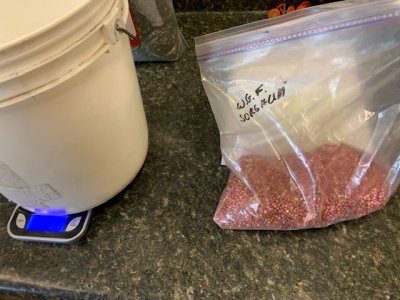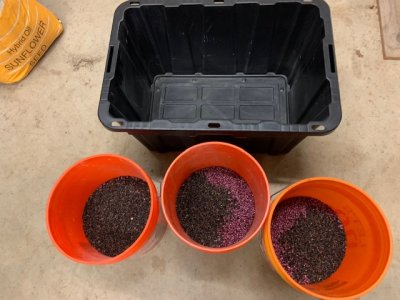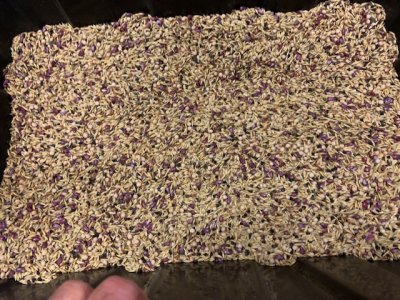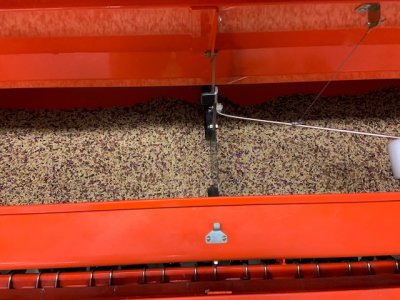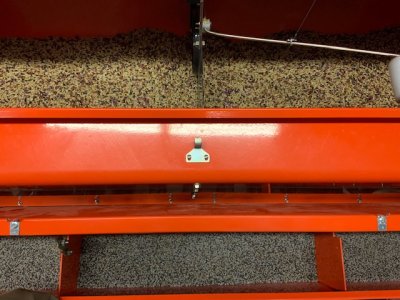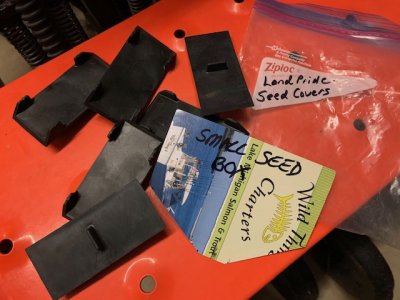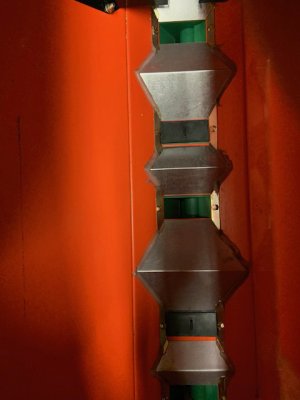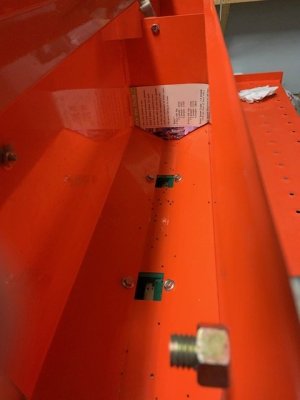Brokenbear
5 year old buck +
This is a great thread fellows and as a newbie to plant/grow green I am like a sponge here!
Quick explain ..due to creek erosion (SE Missouri) I just had a dozer/excavator/dirtpans straighten up my bottoms ..but did not get to plant until mid June and bare dirt I simply used a field cultivator to surface scratch and a traditional drill to plant beans and broadcast some annual rye simply to get some root system established ... and of course not a drop of rain since planting ..Ugh!
Getting ready to spray for weeds which is currently all that is green
But on a positive note that our rain cycle will straighten up I am trying to solidify my plan for my fall "Buffalo" system planting into my currently non existing beans
As this is my first true start point of the Dr Woods philosophy I will be using a Great Plains 706NT ($50 rental from the Soil Conservation District ) and will of course will want to include Winter Rye, Crimson Clover and some Brassicas to name a few ..
As I look at the GreenCover prices for any of the "fall mixes" it gets pretty pricey per acre real quick except the "Over Winter mix" which runs $50 an acre and the "Premium fall mixes) run $125 to $150 an acre and that does not include shipping in some cases ..plus as I read here for both weed control and added mass that additional Winter Rye needs to be added to improve the rye stand on any of the mixes
I am sure you bright fellows have figured out your own "home brewed" mixes you make up yourselves that functions well and keeps more "Green" in your pocket and still do a good job of keeping green in the fields and the deer quite happy ..
If you care to share I'd be much obliged as I am certain others would also be interested ... pounds per acre .. specific seeds as well as percent of each seed per pound would be enormously helpful to those of us just starting out on this Green road!
Thanks
Bear
Quick explain ..due to creek erosion (SE Missouri) I just had a dozer/excavator/dirtpans straighten up my bottoms ..but did not get to plant until mid June and bare dirt I simply used a field cultivator to surface scratch and a traditional drill to plant beans and broadcast some annual rye simply to get some root system established ... and of course not a drop of rain since planting ..Ugh!
Getting ready to spray for weeds which is currently all that is green
But on a positive note that our rain cycle will straighten up I am trying to solidify my plan for my fall "Buffalo" system planting into my currently non existing beans
As this is my first true start point of the Dr Woods philosophy I will be using a Great Plains 706NT ($50 rental from the Soil Conservation District ) and will of course will want to include Winter Rye, Crimson Clover and some Brassicas to name a few ..
As I look at the GreenCover prices for any of the "fall mixes" it gets pretty pricey per acre real quick except the "Over Winter mix" which runs $50 an acre and the "Premium fall mixes) run $125 to $150 an acre and that does not include shipping in some cases ..plus as I read here for both weed control and added mass that additional Winter Rye needs to be added to improve the rye stand on any of the mixes
I am sure you bright fellows have figured out your own "home brewed" mixes you make up yourselves that functions well and keeps more "Green" in your pocket and still do a good job of keeping green in the fields and the deer quite happy ..
If you care to share I'd be much obliged as I am certain others would also be interested ... pounds per acre .. specific seeds as well as percent of each seed per pound would be enormously helpful to those of us just starting out on this Green road!
Thanks
Bear

